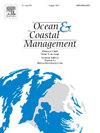识别多种鱼类时空动态中的生物相互作用效应
IF 4.8
2区 环境科学与生态学
Q1 OCEANOGRAPHY
引用次数: 0
摘要
确定不同鱼类如何应对生物驱动的变化是了解鱼类种群动态和设计有效渔业管理策略的关键先决条件之一。建立了2010 - 2019年渤海夏季生态系统10种重要鱼类的联合动态物种分布模型。利用该模型探讨了4种重要经济鱼类:日本鱼(Engraulis japonicus)、多尾鱼(Larimichthys polyactis)、龙尾鱼(Setipinna taty)和银鲳(Pampus argenteus)的时空动态生物学驱动因素。结果表明,低经济价值捕食者田中Liparis tanakae和litulon Lophius出现频率较高,这与日本鳗鲡是这两种鱼类的重要食物来源的观点一致。tanakae和L. litulon的生物量受到日本鳗鲡(E. japonicus)等主要猎物的支持,同时对其他鱼类种群(包括L. polyactis、S. taty和P. argenteus)的生物量产生负交互作用(捕食和竞争相互作用表现为时空密度负共变)。由于“食物-捕食风险权衡”,在密度热点地区,多聚乳杆菌和日本乳杆菌(通常伴有顶级捕食者)表现出更大的分化。该模型揭示了四种物种组合各自具有清晰的时空格局,为同时捕获的物种的解耦渔业提供了支持,并调节了低经济价值掠食性鱼类的丰度,以尽量减少对经济价值鱼类种群恢复的不利生物驱动效应。本研究可作为多物种渔业管理决策框架。本文章由计算机程序翻译,如有差异,请以英文原文为准。
Identifying biological interaction effects in the spatiotemporal dynamics of multiple fish species
Determining how different fish species respond to biologically driven changes is one of the key prerequisites for understanding fish population dynamics and designing effective fisheries management strategies. This study developed a joint dynamic species distribution model for 10 important fish species in the Bohai Sea summer ecosystem from 2010 to 2019. The model was used to explore the biological drivers in the spatio-temporal dynamics of four economically important fish species: Engraulis japonicus, Larimichthys polyactis, Setipinna taty, and Pampus argenteus. The results showed that the low-economic-value predators Liparis tanakae and Lophius litulon appeared more frequently in E. japonicus hotspots, which is consistent with the idea that E. japonicus is an important food source of these two fish species. The biomass of L. tanakae and L. litulon was supported by key prey species such as E. japonicus, whilst exerting negative interaction effects on other fish stocks, including those of L. polyactis, S. taty and P. argenteus (predation and competitive interactions were reflected by negative covariation in spatiotemporal densities). Because of the "food-predation risk trade-off", L. polyactis and E. japonicus (often accompanied by top predators) exhibited greater differentiation in density hotspots. The model revealed the four species assemblages with their own clear spatio-temporal patterns, providing support for decoupling fisheries for species caught together and regulating the abundance of low-economic-value predatory fish to minimize adverse biologically driven effects on the recovery of economically valuable fish stocks. Our study can serve as a management decision-making framework for multispecies fisheries.
求助全文
通过发布文献求助,成功后即可免费获取论文全文。
去求助
来源期刊

Ocean & Coastal Management
环境科学-海洋学
CiteScore
8.50
自引率
15.20%
发文量
321
审稿时长
60 days
期刊介绍:
Ocean & Coastal Management is the leading international journal dedicated to the study of all aspects of ocean and coastal management from the global to local levels.
We publish rigorously peer-reviewed manuscripts from all disciplines, and inter-/trans-disciplinary and co-designed research, but all submissions must make clear the relevance to management and/or governance issues relevant to the sustainable development and conservation of oceans and coasts.
Comparative studies (from sub-national to trans-national cases, and other management / policy arenas) are encouraged, as are studies that critically assess current management practices and governance approaches. Submissions involving robust analysis, development of theory, and improvement of management practice are especially welcome.
 求助内容:
求助内容: 应助结果提醒方式:
应助结果提醒方式:


